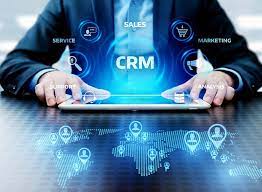How to Integrate Enterprise Debt Collection Tools with Your Existing CRM
Published On : July 25, 2025

How to Integrate Enterprise Debt Collection Tools with Your Existing CRM
In today’s fast-paced financial landscape, debt collection processes must be seamless, data-driven, and highly automated. Integrating enterprise debt collection tools with your existing Customer Relationship Management (CRM) system is one of the smartest ways to achieve operational efficiency and enhance collections. This article outlines the key steps and benefits of integration, along with a tailored recommendation for debt collectors in Qatar.
Why Integration Matters
Integrating debt collection software with your CRM delivers a unified view of customers, streamlines workflows, and ensures data accuracy. Benefits include:
- Improved client communication through centralized data
- Faster recovery with automated reminders and follow-ups
- Enhanced compliance via audit trails and regulatory features
- Data consistency across sales, support, and finance teams
Steps to Integrate Debt Collection Tools with Your CRM
1. Assess Compatibility
Start by identifying whether your CRM supports integration with your chosen debt collection tool. Look for:
- Open APIs or middleware options
- Cloud compatibility (e.g., SaaS-based systems)
- Support for custom plugins or connectors
2. Define Integration Objectives
Clarify what you aim to achieve. Common objectives include:
- Automating payment reminders
- Syncing customer contact and transaction history
- Generating real-time reports on collection progress
3. Map Data Fields
Ensure both systems use consistent formats for customer details, account numbers, outstanding balances, etc. Define:
- Which fields need to be synced (e.g., name, invoice ID, payment status)
- Frequency of synchronization (real-time or scheduled updates)
4. Use APIs or Integration Platforms
Connect both systems via:
- APIs (Application Programming Interfaces): Ideal for real-time, secure integration
- Third-party connectors like Zapier or custom middleware tools
- Native integrations offered by CRM or collection tool providers
5. Test and Validate
Before full deployment, test the integration with a sample dataset. Check for:
- Accurate syncing of data
- Error handling protocols
- Notifications and alert workflows
6. Train Teams and Monitor Performance
Post-integration, ensure your staff understands how to use the integrated system effectively. Monitor KPIs such as:
- Collection rate improvement
- Reduced time-to-collect
- Fewer missed follow-ups
Debt Collection in Qatar: Why Debtics Is the Ideal Choice
For debt collection agencies and enterprises in Qatar, regulatory compliance, multilingual support, and regional customization are essential. Debtics offers a robust, cloud-based debt collection software designed to:
- Integrate easily with popular CRM systems
- Support Arabic and English interfaces
- Ensure compliance with Qatar’s financial and data protection laws
- Offer real-time dashboards, automated communication, and powerful reporting tools
Whether you're managing large portfolios or a handful of clients, Debtics provides the flexibility and control needed to accelerate recovery while maintaining professionalism.
Conclusion
Integrating enterprise debt collection tools with your existing CRM not only improves operational efficiency but also strengthens customer relationships and increases collection success. For businesses and agencies in Qatar, Debtics is your all-in-one solution to streamline recovery, stay compliant, and boost results.
Ready to transform your debt recovery process?
Discover how Debtics can supercharge your CRM today.
Best debt collection automation in Qatar
Best debt collection integration software in Qatar
Best debt collection CRM software in Qatar
